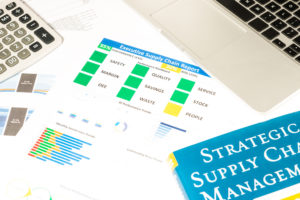
What to Expect From Your OEM Supply Chain Customer Experience
May 16, 2019
When it comes to customer service, the stakes are getting higher and higher. Consumers in the business-to-consumer (B2C) world have greater expectations and those are now bleeding into business-to-business (B2B) – after all, we’re all human beings. The pressure is on for supply chain partners to follow a customer-centric model to give Original Equipment Manufacturers (OEMs) access to personalized data, transactions and account responsiveness quickly and accurately. Yet MIT Sloan Management Review cites that “less than 30% of B2B customers say suppliers provide excellent customer experience.”
There is certainly incentive for supply chain partners to elevate the customer experience (CX) for their OEM customers. When customer satisfaction is surpassed, loyalty and repeat business follows as well as happier employees, revenue gains of 5 to 10 percent and cost reductions of 15 to 25 percent within two or three years, reports McKinsey.
Other industries, such as retail, financial services, travel, insurance and telecommunications are investing heavily in automation, voice technology, chat bots, and digital applications that boost CX. Call centers, for example, are now working with Artificial Intelligence (AI) to detect voice inflections, “happiness” indicators and, of course, not-so-happy indicators. AI is able to process historical data from CRM applications and expedite orders. It can use voice-bots and chat bots to answer “low-hanging fruit” inquiries, such as “what is your shipping address,” or “is the storm in your area affecting shipments.” Time savings and speed in responsiveness earned from such technologies can push a customer relationship to extraordinary while translating into real cost savings.

So what should OEMs start to expect from their own supplier-partners, as part of their customer experience? From Tier 1 and Tier 2 supplier-partner organizations, OEMs demand high quality, cost-competitiveness, exceptional communication and on-time production scheduling. These attributes should be woven into every aspect of the OEM customer journey – from initial inquiry and consultation through plant tours, prototyping, full production and quarterly reviews.

But advancing the OEM CX isn’t just about asking what you, the supply chain director or commodity manager, want or need. Henry Ford once remarked that his customers would’ve asked to “give us faster horses.” Rather, supplier-partners should be working to identify ways to benefit your relationship above and beyond your requirements.
The technologies in use in many B2C industries can be leveraged for similar purposes throughout the OEM CX. Your partnership with a supplier-partner should experience an evolution of improvements, so that you’re seeing incremental advancements you may have not had to ask for – they’re being introduced and refined with your input over time. These improvements can take the form of “self-service” data access or an integrated quoting process, as an example.
Whatever the improvement may be, this process will quickly become the new “norm” that OEMs simply expect from their dealings with strategic supply chain partners. Now it’s your turn to take inventory: Are your fabricators and other supplier-partners keeping pace with CX developments?